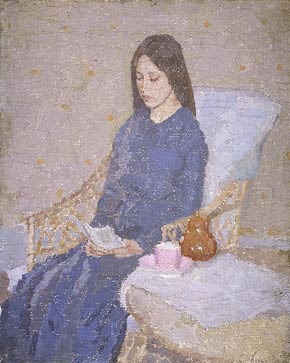“Gwen John and Augustus John”, at Tate Britain, is not just a tale of two artists, brother and sister, but of two startlingly contrasting posthumous reputations. As a preternaturally gifted student at the Slade School of Art, at the turn of the twentieth century, Augustus John was hyperbolically acclaimed by his teachers, including Sir Henry Tonks, as another Raphael or Michelangelo. During his early career he shouldered the burden of such expectations with considerable bravado. But after promising beginnings he subsided into a rather dull middle age, as a painter of conventional, albeit occasionally piercing, portraits. In his later years he drank so much and painted so many pictures of dubious quality that after his death in 1961, when his heirs were constrained by inheritance tax to dispose of the contents of his studio, the market was suddenly flooded with slapdash and painfully inferior paintings by his hand. Auction-room prices for his work hit rock bottom and his reputation suffered a reverse from which it has never subsequently recovered.
The wheel of critical fortune has been considerably kinder to Gwen John, whose career followed a more elusive and shorter trajectory. After studying at the Slade alongside her brother, she travelled to France, settling in Paris, where she modelled for Auguste Rodin. She embarked on a protracted but distinctly one-sided love affair with the sculptor (who was considerably her senior), which began, one day, when he stooped to kiss her as she posed for his statue Whistler’s Muse. After he broke off their relationship, she perversely chose to move to the Parisian suburb of Meudon, where Rodin had a second home. There she led a stifled life of disappointment, snatching distant glimpses of the object of her unrequited affections and taking consolation in her conversion to Catholicism. After Rodin’s...


